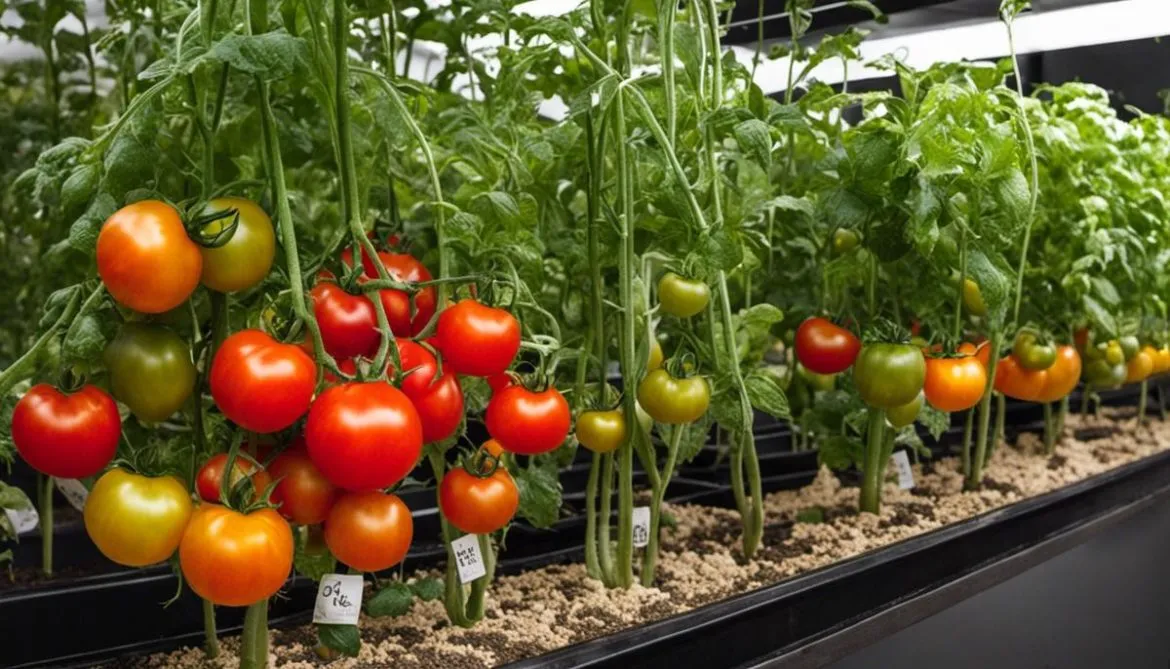Table of Contents
Transforming a small space in your home into a verdant tomato garden is not only possible but highly rewarding. Indoor tomato plants offer garden enthusiasts the joy of home-grown produce year-round, no matter the climate outside. Whether you have a green thumb or are a gardening novice, this exploration into the world of indoor tomato cultivation will guide you on the path from choosing the right variety, setting up an optimal growing environment, and taking proper care of your plants, to finally harvesting and using your own freshly picked tomatoes. With some patience, dedication, and a bit of guidance, you too can enjoy the fresh-from-the-vine taste of home-grown tomatoes.
Choosing the Right Indoor Tomato Variety
Choosing the appropriate tomato variety is essential when contemplating indoor cultivation.
It is critical to select an indoor-friendly species, including determinant varieties, dwarf plants, or cherry tomatoes.
Determinant tomato varieties stop growing when the fruit sets on the top bud. They produce a full crop of tomatoes all at once, making them advantageous for indoor gardening.
Dwarf tomato plants remain compact in size and suit indoor gardening situations due to their size restrictions.
Cherry tomatoes, on the other hand, are preferred for indoor growth due to their compact growth habit and prolific production of small, sweet fruit.
In terms of growing season, tomato plants are typically considered a warm-season crop, suitable for growing during the summer months.
However, with indoor cultivation, you can manipulate the growing season to produce tomatoes year-round.
It’s crucial to provide appropriate conditions to mimic the outdoor environment of the growing season.
Light requirements for indoor tomato plants are very critical.
They require at least 8 hours of direct sunlight or 12-16 hours of artificial grow light per day.
The light should be evenly distributed among all the plants—for example, rotating them regularly or moving grow lights around to ensure that all plants get an equal amount of light.
It’s also important to keep the light sources close to the plants, typically about 2-4 inches above the top of the plant.
To replica the ideal indoor environment for tomato plants, the key factors to consider are the temperature and humidity levels.
The preferred room temperature for indoor tomatoes ranges between 65 to 85 degrees Fahrenheit during the day and about 10-15 degrees cooler at nighttime.
They also thrive in high humidity levels, ideally between 60-70%.
However, too much moisture can cause mold and fungus issues, so venting is necessary to mitigate this risk.
Another essential factor for the ideal indoor environment is soil composition.
The soil should be well-draining, consisting of rich organic matter, and preferably neutral pH levels.
Specific indoor tomato fertilizers are typically considered ideal, but they should be used sparingly to avoid salt buildup, which may harm the plants.
Also, water management is a crucial factor when cultivating tomatoes indoors.
Compared to their outdoor counterparts, water requirements might differ depending on the plants’ size and maturity, pot size, and room conditions.
The golden rule is to water the soil when the top inch feels dry to the touch.
Lastly, disease prevention is an important element of a successful indoor tomato garden.
Regularly check for symptoms like leaf spots or discolored leaves, as early detection can prevent full-blown infestations and protect your tomato crop.
If you’ve always dreamed of growing your very own tomatoes, you’ll be thrilled to know it’s possible to have a delightful indoor tomato garden with the right variety. A successful indoor tomato growth entails making proper choices about the type of tomato to grow and ensuring the conditions the plant grows under are most suitable.
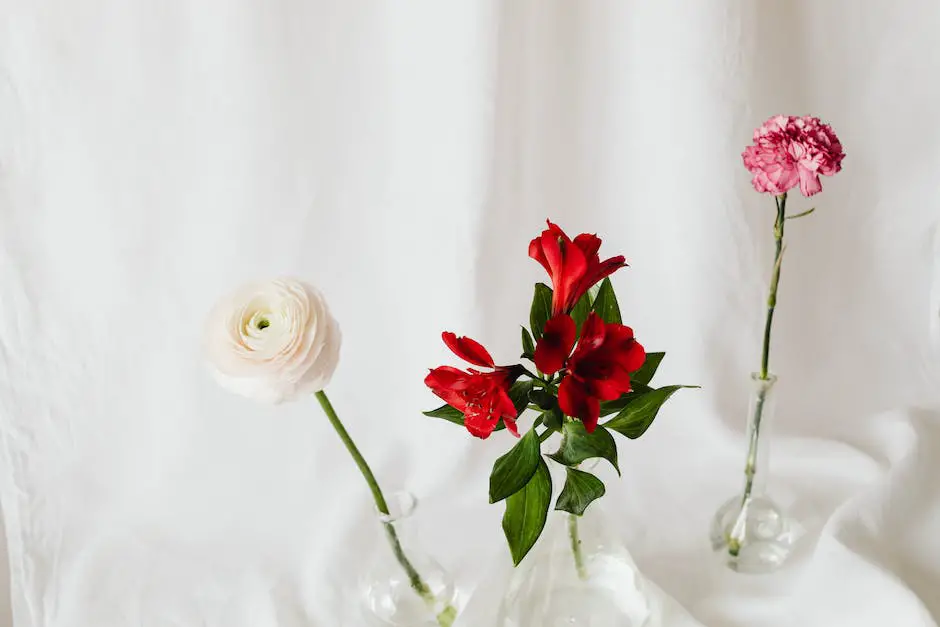
Setting Up Your Indoor Tomato Garden
Choosing the Ideal Pots for Your Indoor Tomato Plants
As part of setting up the right conditions for your indoor tomatoes, choosing the appropriate pots is a key step. The growth and development of your tomatoes largely depend on the size and depth of the pots they are grown in. Specifically, for large tomato breeds such as beefsteak, a pot that is 18 inches deep and between 14 and 20 inches wide would be ideal. The depth of the pot is imperative as it influences the plant’s ability to develop a robust root system, which in turn, affects tomato yield. Conversely, smaller tomato varieties like the bush or cherry breed can thrive in comparatively smaller pots, given they’re no less than 12 inches both in depth and diameter. To avoid the proliferation of root rot and the adverse occurrence of waterlogging, it’s essential to use pots with a sufficient number of drainage holes.
Ideal Soil Composition for Indoor Tomato Plants
Tomatoes prefer well-draining, nutrient-rich soil. A good quality commercial potting mix is generally sufficient for indoor tomatoes. Look for one that contains peat moss and vermiculite or perlite, which will help retain moisture while also promoting good drainage. Some potting mixes may also contain compost or slow-release fertilizers, which can provide an extra nutrient boost. If you’re inclined to create your own mix, combine equal parts garden soil, peat moss, and perlite or sand. You might also want to add a handful of organic compost or well-rotted manure. Ensure the soil has a pH of 6.0 to 6.8 – tomatoes prefer slightly acidic conditions.
Water and Light Systems for Indoor Tomato Plants
Tomato plants are sun-loving vegetables; they require at least eight hours of sunlight each day. When growing these plants indoor, situate them near a south-facing window where they can get ample sunlight. If natural light is insufficient, consider using grow lights. These specialized lights are designed to simulate natural sunlight and can give a healthy boost to your indoor tomato plants.
As for watering, tomatoes prefer their soil to be kept consistently moist, but not waterlogged. As a general guideline, water the plants deeply but infrequently, waiting until the soil is dry to a depth of one inch before watering again. This usually translates to watering them once or twice a week. However, always be guided by the plant’s appearance: if the leaves start to wilt or the fruit appears shriveled or wrinkled, water the plant immediately. Remember also to avoid getting the leaves wet as this could lead to fungal diseases. Instead, water at the base of the plant or use a soaker hose or drip system.
Indoor Tomato Plants: Temperature, Humidity, and Their Effects on Growth
Indoor tomato plants thrive best in specific conditions. Their ideal temperature range is between 65 and 85 degrees Fahrenheit. Areas experiencing temperatures under 60 degrees during daytime hours can impede growth and disrupt fruitful yields. In contrast, overly warm temperatures can put the plants under stress, often resulting in a drop in blossom count.
Humidity is another crucial factor for indoor tomato plants. These plants, more so when grown indoors, crave moderate levels of humidity. One way to ensure appropriate humidity is by intermittently misting water onto these plants or positioning a water tray near their growing vicinity to augment moisture levels. Keeping in mind, excessively humid environments can serve as breeding grounds for diseases and pests. Thus, achieving a proper balance in humidity is a significant element of successful indoor tomato cultivation.
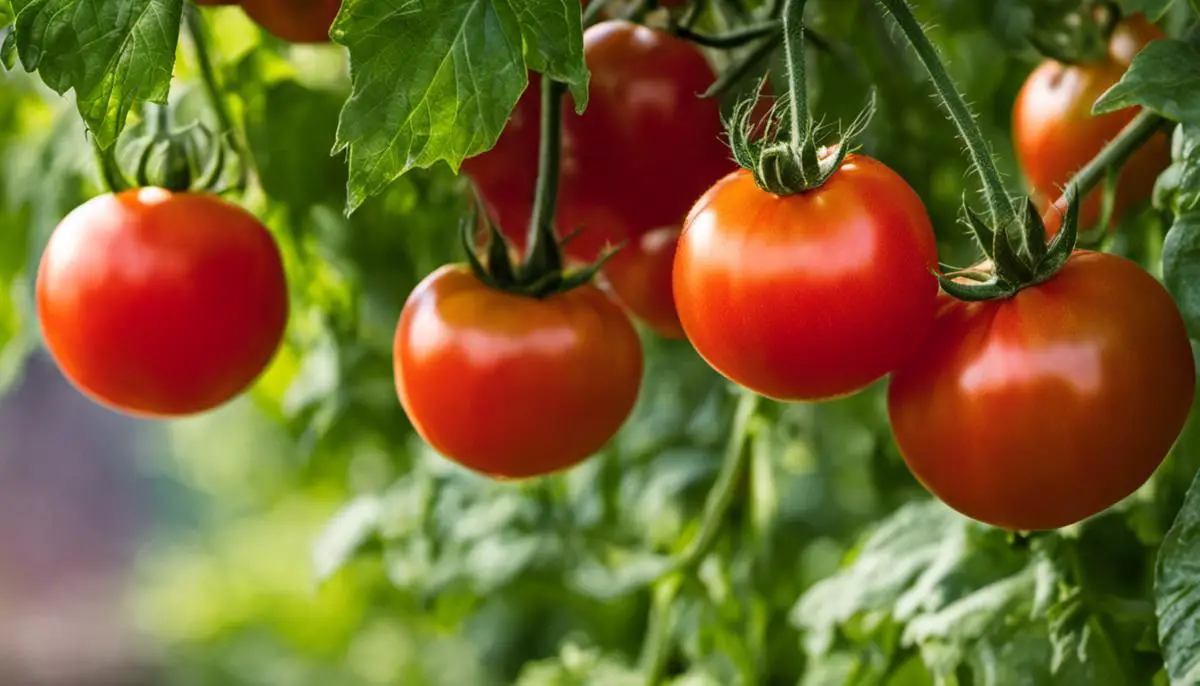
Ongoing Care and Maintenance
Dietary Needs and Feeding Practices for Indoor Tomato Plants
Indoor tomato plants, for their optimum growth, need to be fed regularly. As these plants are cultivated in a limited environment, acquiring all vital nutrients from the soil alone becomes challenging. This necessitates the integration of a premium-grade vegetable fertilizer into the plant’s hydration regimen. Typically, fertilizing every few weeks is encouraged. Nevertheless, this interval may require adjustments based on the tomato’s specific species and the nature of the soil used. It is generally a good idea to choose fertilizers that are rich in phosphorus and potassium as these elements facilitate the process of flowering and fruit generation.
Watering Indoor Tomato Plants
Consistent and proper watering is crucial for tomato plants. It’s essential to keep the soil moist but not waterlogged to prevent root rot. As a rule of thumb, the top inch of soil should feel dry to the touch before watering. Avoid watering directly on the leaves to prevent fungal diseases. If the plants show signs of wilting or yellowing of the leaves, it can be an indicator of under watering or overwatering. Monitoring the plant will help in determining the correct watering needs.
Staking Indoor Tomato Plants
Tomato plants, whether grown indoors or outdoors, require support as they grow. Stakes, cages, or trellises can be used for this purpose. Staking the plants helps in providing the needed support for the branches heavy with fruit, ensuring better air circulation and reducing the risk of disease. Attach the stems loosely to the stakes using a soft string or cloth, being careful not to harm the plant. As the plant grows, add more ties where necessary.
Regulating Temperature for Indoor Tomato Plants
Maintaining the right temperature is pivotal for indoor tomato plants’ growth and fruit production. Tomatoes thrive in warm conditions, ideally between 70-80 degrees Fahrenheit during the day and 60-70 degrees Fahrenheit at night. Temperatures outside this range can hinder the plant’s growth and negatively impact fruit set.
Disease Control for Indoor Tomato Plants
Indoor tomato plants are not immune to diseases and pests. Regular inspection is crucial to detect early signs of any infestation or disease. Applying an insecticidal soap or horticultural oil can control most pests, while a fungicide can help manage diseases such as blight or leaf spot. Ensure good air circulation around the plants and avoid overhead watering to keep disease occurrences to a minimum. Also, proper hygiene, such as cleaning hands and tools before handling plants, can prevent the spread of diseases.
Maintaining Indoor Tomato Plants
Maintenance of indoor tomato plants requires deft pruning and apt training. Pruning focuses the plant’s efforts on fruit production rather than excessive foliage growth. To achieve this, consistently trim the suckers, these being the tiny sprigs that sprout at the conjunction of the main stem and branches. Additionally, guiding or ‘training’ your plant promotes even growth and ensures adequate access to light and air. Using plant ties to fasten your plant to stakes can be an effective way to influence its growth path.
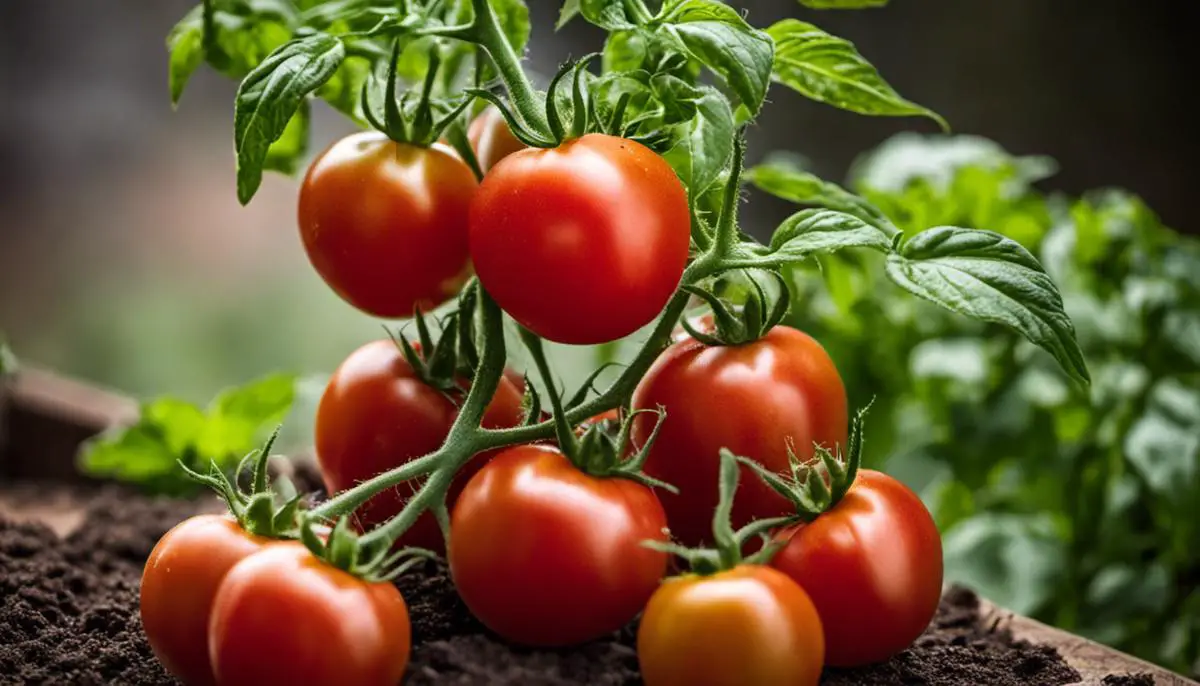
Harvesting and Use of Indoor Tomatoes
The Art of Harvesting Indoor Tomatoes
Indoor cultivation can enable your tomato plants to yield fruit all year round due to the controlled conditions. However, identifying the perfect moment to harvest your tomatoes is a skill to be mastered. The ideal time to collect your indoor produce is when they display a deep, even color. For instance, the popular varieties like ‘Celebrity’ or ‘Bush Goliath’ will exhibit a rich, radiant red. Alternatively, for less traditional types like ‘Green Zebra’ or ‘Cherokee Purple,’ you should look out for a green showing yellow streaks or a brownish-purple color respectively.
Color aside, texture can also be a reliable harvesting indicator. Tomatoes ready for picking will yield slightly to a gentle squeeze. However, it is essential to remember that overripe tomatoes might feel overly softened or mushy so timing your harvest is crucial.
During the harvest, it is advised to use pruning scissors or shears to cut the tomato stem just above the fruit, mitigating potential plant damage. Avoid the temptation to pull or twist tomatoes off the plant, as these actions can cause unneeded harm to your plant.
Storing Indoor-Grown Tomatoes
Once harvested, store your ripe tomatoes at room temperature and consume them within a few days for the freshest taste. Refrigerating fresh tomatoes can change their flavor and texture, making them mealy and less succulent. If you have excess tomatoes that you cannot use promptly, consider preserving methods like canning, drying, or freezing.
Using Indoor Tomatoes in Cooking
Indoor tomatoes can be used in a variety of ways in cooking, offering immense versatility. Freshly picked tomatoes make a vibrant addition to salads or can be sliced thickly and layered on sandwiches.
Chopped fresh tomatoes can also be cooked down into sauces, stews, or soups. Or, for a minimalistic approach, roast them in the oven with olive oil, salt, pepper, and fresh herbs for a deceptively simple yet delicious side dish.
In addition, you can also stuff larger indoor varieties with rice, meat, or other vegetables and bake them for a unique, savory dish. Tomato jams or chutneys create a balance of sweet and savory, which can be used as a relish or sauce with various dishes.
Versatility of Indoor Tomatoes in Various Cuisines
Given their universal adaptability, indoor tomatoes can be incorporated into a variety of cuisines. For Italian cooking, fresh tomatoes can be used in making marinara sauce for pasta or pizza. In Mexican dishes, they can be key components in salsas, enchilada sauce, or pico de gallo.
Consider creating an Indian-inspired tomato curry or use them in classic American dishes like burgers, chili, or tomato soup. With the tangy freshness of indoor tomatoes, the possibilities are almost endless—you’re only limited by your culinary imagination!
Indoor tomato plants not only provide you with a rewarding gardening experience but also offer a fresh, flavorful ingredient that you can incorporate into your home-cooked meals all year round.
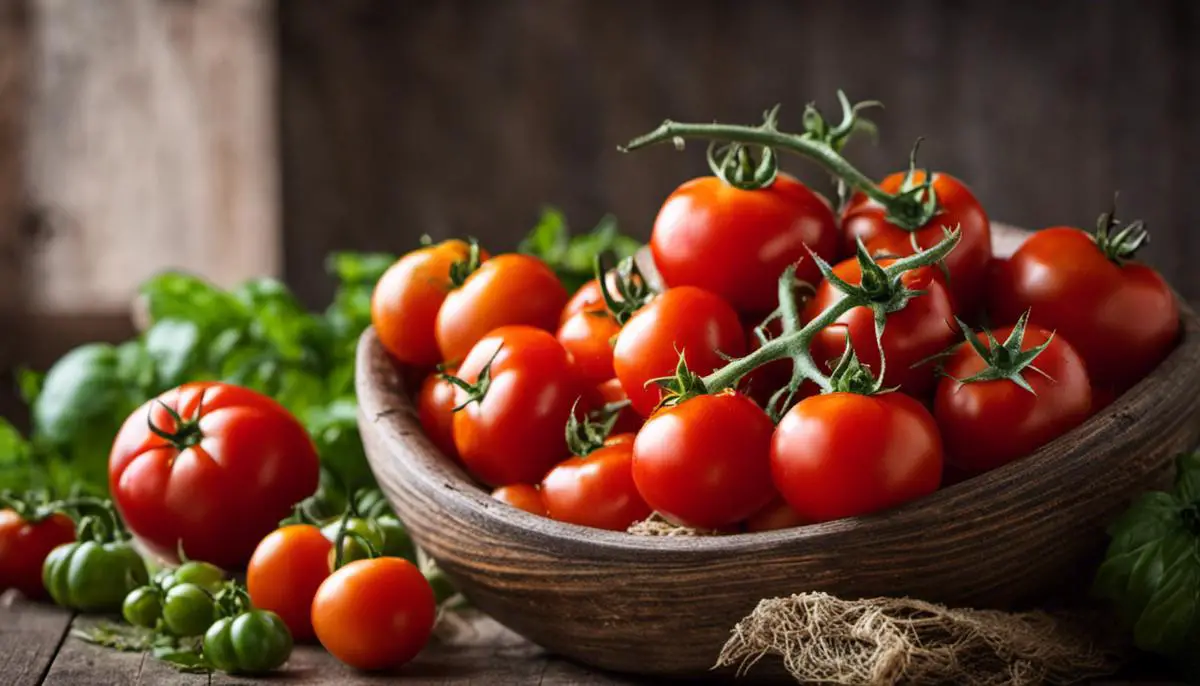
As you end your journey into the world of indoor tomato plants, equipped with the knowledge of choosing the right tomato varieties for indoor growing, setting up a thriving indoor garden, ensuring regular care and maintenance, and harvesting and using your perfectly ripe tomatoes, it’s time to start your own indoor tomato garden. Start small, patiently nurture these tips and tricks, and soon you’ll be delighting in the unique satisfaction of picking and eating your own indoor-grown tomatoes. With time, you will likely discover that the taste of these unspeakably fresh tomatoes and the rewarding labor of love involved in growing them is truly beyond compare.
